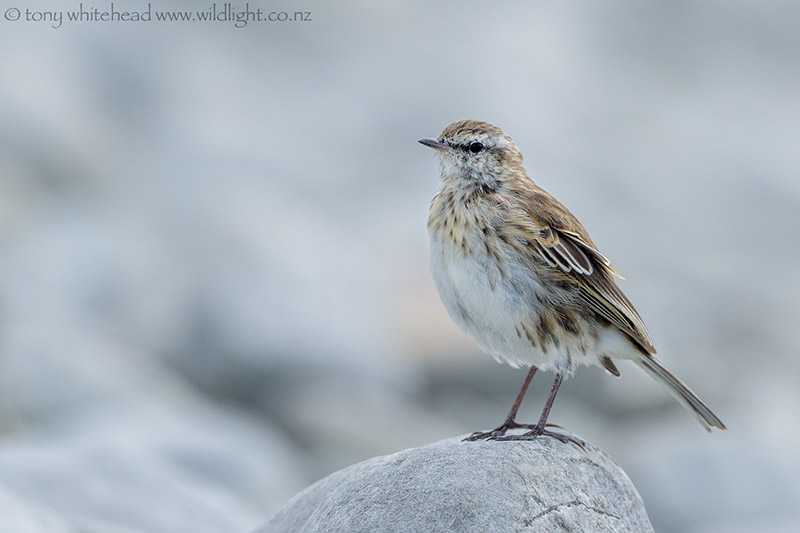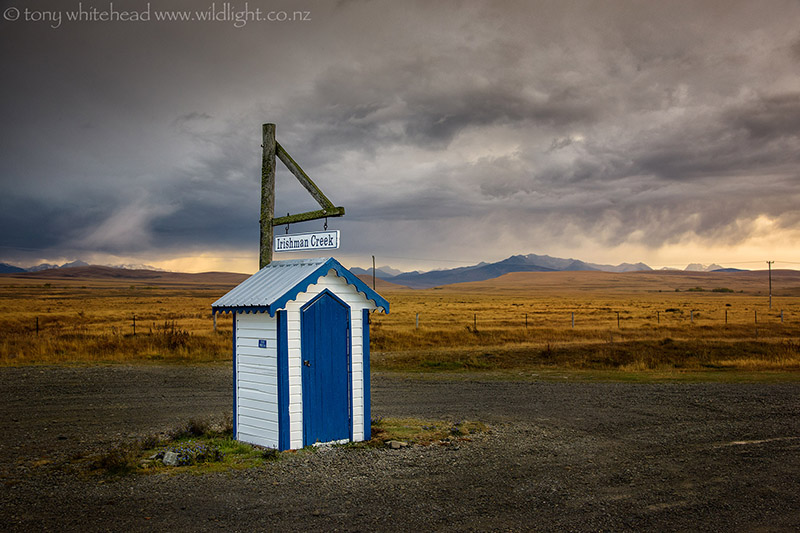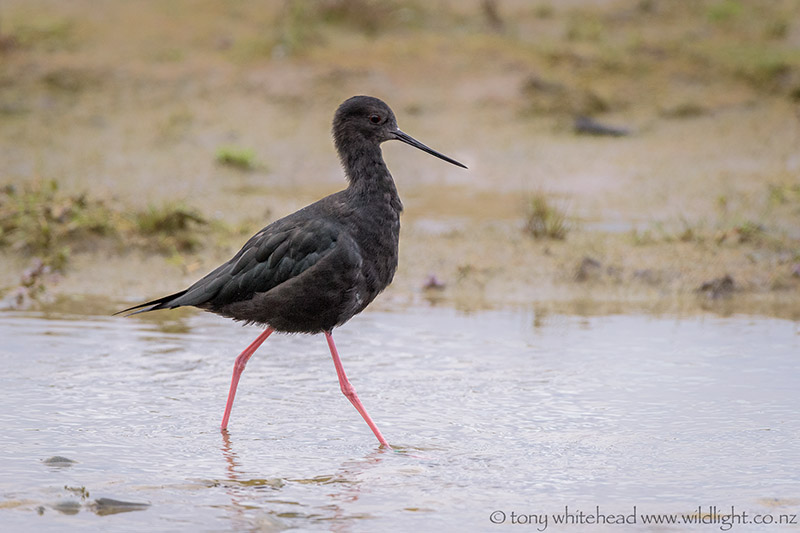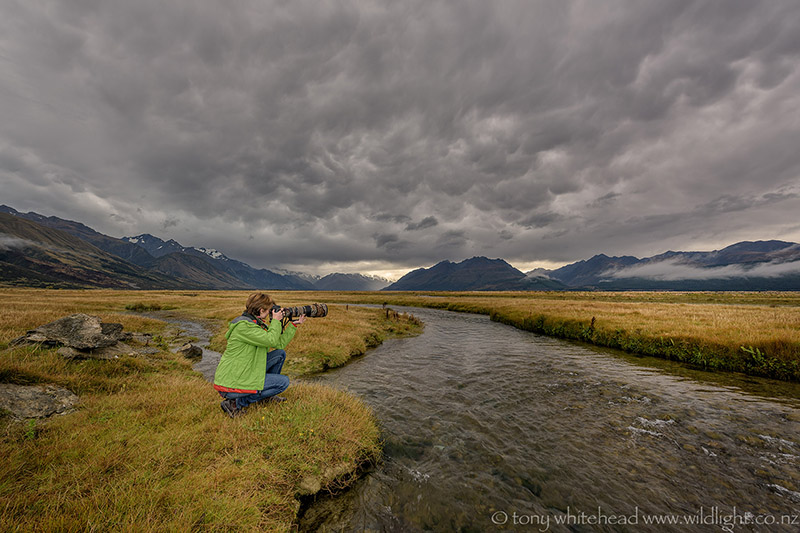When we planned our trip to the MacKenzie country, I was looking forward to the opportunity to try and see Black Stilts (Kaki) in the wild. They are the rarest wading bird in the world with only 200 or so birds in the wild so we didn’t have high expectations. We headed through to Twizel to get some information on the Black Stilt Visitor Hide as it seemed a good way of seeing them, if not in the wild. Booking a trip for the following day we also got some information as to where the birds are released on the braided Tasman River after successful captive breeding.
Our trip to the hide was a disappointment with it not being a hide at all in the bird watching sense, having only a view out over a valley where the captive breeding aviaries are visible in the middle distance. Two retired breeding birds are in an aviary at the entrance so you can see them from nearby but they become agitated when people are close which is unpleasant and there are no real photographic opportunities. I cannot recommend a trip to the hide and the only benefit I could see was that our modest entrance fee hopefully contributed toward supporting the captive breeding program. The best aspect of visiting the hide was a tip from another photographer who had seen a pair of Crested Grebes on the nearby Kelland Ponds the day before.
We headed the short distance to the Kelland Ponds and began a circumnavigation in the car stopping to look out over the water wherever there was a clear outlook. Just when we had almost given up on seeing anything other than coots and were lamenting not bringing binoculars, I spotted a pair of pale breasted birds near the far side. We managed to get a little closer and grabbed a few record shots and then found a way around the far side and crept in through the bush to get some better light and a good background. I have always been impressed by Crested Grebes with their chestnut cheek frills and black crests but have only ever seen them at Lake Hayes near Queenstown and never in a situation to get decent photos, so was very excited by this opportunity and very happy with the resulting image.

Later in the week, Edin and I decided to take an early morning trip to explore the braided Tasman River at the head of Lake Tekapo on the offchance of seeing a Black Stilt in the wild. I didn’t hold much hope as it is a huge area with very small areas readily accessible but as we were attaching our long lenses to our cameras we heard the unmistakable peeping of a Stilt and an adult and juvenile flew down stream within 20 metres of us. If we had been finished setting up we would have had a chance not only on a Black Stilt in the wild but an adult and juvenile in flight. We headed down toward where they had landed and sat at the river edge hoping that they would forage their way back toward us. The juvenile had vanished but we watched the adult for over an hour and it moved toward us repeatedly before flying away and foraging back toward us but never approaching close enough for anything more than a record shot. The best we did was with a co-operative New Zealand Pipit that was sharing the rocky river edge with us.

Edin was insistent that we make another early morning trip despite the weather looking dreary. I thought we were hoping for a bit much to be lucky twice so we stopped on the way to again explore the Irishman Creek landscape opportunities with the dramatic stormy sky.

By the time we got to Lake Pukaki the weather was decidedly wet but we stopped and rigged up our cameras before turning in toward the Tasman River which was as well because as we approached along the muddy track there were the clear shapes of two Black Stilts foraging at the edge of the river braid nearest the track. We crept the car forward in the rain and wound down the windows to get a grandstand view of the birds from the protection of our mobile hide. Edin climbed into the back seat so we each had an unobstructed view as we followed the birds through our viewfinders capturing a great collection of images. On reviewing them later we could tell from the bands that we had actually seen four individual Black Stilts over our two visits so consider ourselves very fortunate.

As we were leaving we saw a large flock of Black-fronted Terns in flight so stopped to look at them and get some landscape images looking up the valley toward Aoraki Mount Cook which was shrouded by cloud. A warm coffee and cake at Glentanner was a great end to another special but chilly and damp morning.

Bird images all with Nikon D810 and 500mmm f4 lens with 1.4x teleconverter. Irishman Creek with 24-120mm f4 lens and Tasman River landscape with 14-24mm f2.8 lens.

